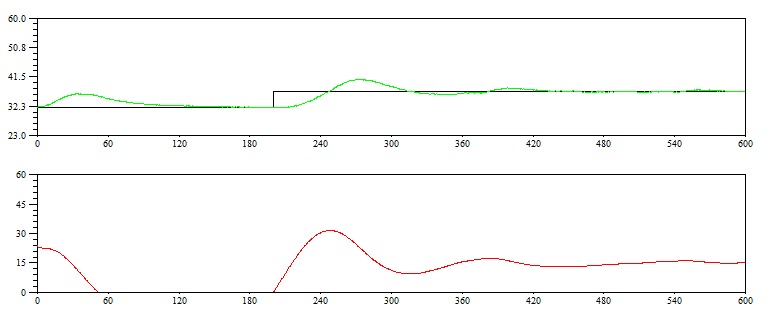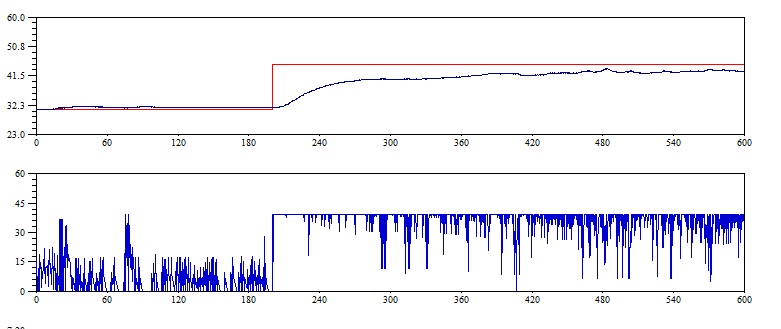Next: Conclusion Up: Set Point Tracking Previous: PI Controller using Ziegler
 |
 |
From the graph it can be seen that for both the experiments, the self tuning PID controller is able to keep the temperature close to the set point and the stabilisation is also fast. For comparison, plots for experiments conducted with conventional PID controller designed using Ziegler Nichols method are also shown.
 |
 |
From the graph, we can see that the conventional PID controller is not able to make the temperature close to the set point
when the set point value is 45![]() C. The self tuning PID controller had successfully brought the temperature to 45
C. The self tuning PID controller had successfully brought the temperature to 45![]() C.
C.
rokade 2017-04-23